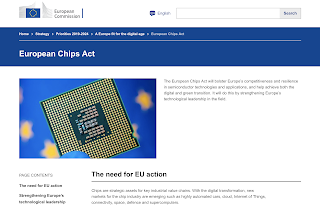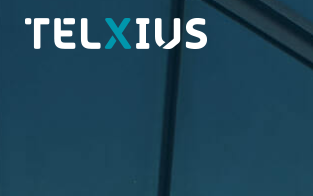The U.S. House of Representatives voted 243-187 to pass the CHIPS and Science Act of 2022. The legislation was approved by the U.S. Senate last week. President Biden is now expected to sign it into law.
The principal aim of the CHIPS Act is to onshore domestic manufacturing of semiconductors. It will also substantially increase government funding for science and technology development programs impacting the networking and telecommunications fields.
The legislation provides $54.2 billion in total appropriations for CHIPS and Public Wireless Supply Chain Innovation (also known as ORAN), and $82.5 billion in additional appropriations for research programs through the National Science Foundation, the Department of Commerce, NIST, NASA, and the Department of Energy.
Here is a summary
CHIPS for America Fund:
- Manufacturing Incentives: $39 billion in financial assistance to build, expand, or modernize domestic facilities and equipment for semiconductor fabrication, assembly, testing, advanced packaging, or research and development, including $2 billion specifically for mature semiconductors. Within the incentive program, up to $6 billion may be used for the cost of direct loans and loan guarantees.
- Research and Development (R&D): $11 billion for Department of Commerce (DOC) research and development.
- National Semiconductor Technology Center (NSTC): A public-private partnership to conduct advanced semiconductor manufacturing R&D and prototyping; invest in new technologies; and expand workforce training and development opportunities.
- National Advanced Packaging Manufacturing Program: A Federal R&D program to strengthen advanced assembly, test, and packaging (ATP) capabilities, in coordination with the NSTC.
- Manufacturing USA Semiconductor Institute: A partnership between government, industry, and academia to research virtualization of semiconductor machinery, develop ATP capabilities, and design and disseminate training.
- Microelectronics Metrology R&D: A National Institute of Standards and
CHIPS for America Workforce and Education Fund: $200 million to kick start development of the domestic semiconductor workforce, which faces near-term labor shortages, by leveraging activities of the National Science Foundation.
CHIPS for America Defense Fund: $2 billion for the DoD to implement the Microelectronics Commons, a national network for onshore, university-based prototyping, lab-to-fab transition of semiconductor technologies—including DoD-unique applications—and semiconductor workforce training.
CHIPS for America International Technology Security and Innovation Fund: $500 million for the DOS, in coordination with the U.S. Agency for International Development, the Export-Import Bank, and the U.S. International Development Finance Corporation, to support international information and communications technology security and semiconductor supply chain activities, including supporting the development and adoption of secure and trusted telecommunications technologies, semiconductors, and other emerging technologies.
Public Wireless Supply Chain Innovation Fund: $1.5 billion through the DOC National Telecommunications and Information Administration (NTIA), in coordination with NIST, the Department of Homeland Security, and the Director of National Intelligence, among others, to spur movement towards open-architecture, software-based wireless technologies, and funding innovative, ‘leap-ahead’ technologies in the U.S. mobile broadband market.Technology (NIST) research program to advance measurement science, standards, material characterization, instrumentation, testing, and manufacturing capabilities.
O-RAN: The CHIPS & Innovation Act of 2022 would also provide $1.5 billion to implement the USA Telecom Act that was enacted in the William M. (Mac) Thornberry National Defense Authorization Act for Fiscal Year 2021. This program would help shore up the global telecommunications supply chain and limit the scope of involvement globally of telecommunication companies with close ties to the Communist Party of China, like Huawei. Funds would be used to capitalize on U.S. software advantages, accelerating development of an open-architecture model (known as OpenRAN) that would allow for alternative vendors to enter the market for specific network components, rather than having to compete with Huawei end-to-end.
Basic R&D: Expanded funding for Research and Innovation (National Science Foundation, Department of Commerce, National Institute of Standards and Technology, NASA, and Department of Energy). Representing the largest five-year investment in public R&D in the nation’s history, the expanded funding aims to "grow both curiosity-driven and translational research, ensuring both the creation of new ideas and the ability of those ideas to create new innovations, products, companies, and jobs in the United States."
https://www.commerce.senate.gov/2022/7/view-the-chips-legislation
Read the bill's text: https://www.commerce.senate.gov/services/files/CFC99CC6-CE84-4B1A-8BBF-8D2E84BD7965
Wednesday, February 09, 2022 Europa 
The European Commission is calling for €43 billion euros of public and private investments to spur the design, manufacturing and packaging of advanced semiconductors in Europe.The EU Chips Act aims to bring about a thriving semiconductor sector from research to production and a resilient supply chain. The ambition is for the EU to double its current market share in semiconductors to 20% in 2030. Key elements of the proposal:The main components are:The...



















































